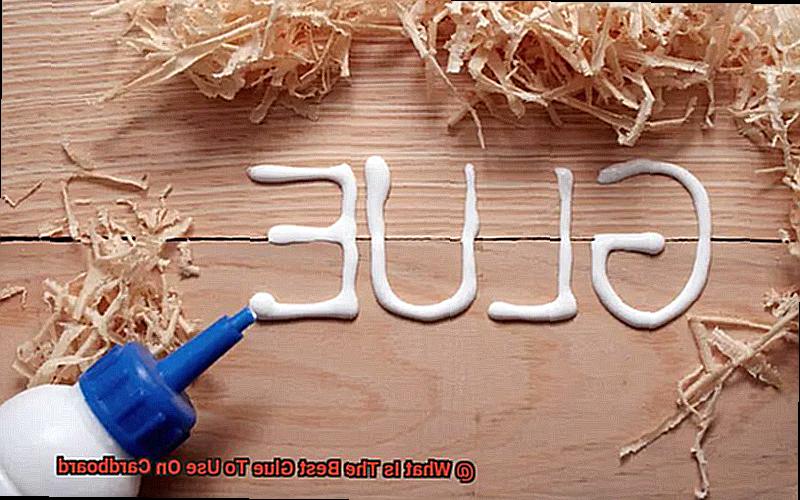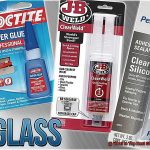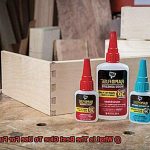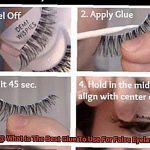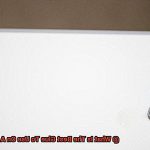Imagine a world where everything was cardboard. Sounds weird, right? But in reality, cardboard is more than just packaging – it’s a versatile material that fuels our creativity and DIY projects. And when it comes to working with this wonder material, we all ask ourselves: What’s the best glue for cardboard?
In the vast realm of glues, there are countless options claiming to be the ultimate adhesive for this humble material. From trusty household staples to craft-specific formulas, it can feel overwhelming. But fret not. Today, we embark on an exciting journey to uncover the secrets behind finding the perfect glue for all your cardboard needs.
So why does choosing the right adhesive matter so much? Picture this: you spend hours meticulously crafting a stunning cardboard masterpiece only to watch it crumble because you used the wrong glue. Heartbreaking, isn’t it? That’s why knowing which glue to choose can mean the difference between a sturdy structure and a flimsy disaster.
Join us as we unravel the mysteries of cardboard adhesion, exploring different types of glues and their pros and cons. From classic white glue that kids adore worldwide to modern adhesive formulas with unbeatable strength, we’ll analyze their performance, durability, versatility, and suitability for various cardboard projects.
Whether you’re a beginner in the world of cardboard or a seasoned DIY pro, this blog post will arm you with knowledge to make informed decisions about your gluing adventures. Say goodbye to failed projects and hello to flawless bonding in your cardboard creations.
Stay tuned for our enlightening exploration into the best glues for cardboard. We’ll guide you towards adhesive utopia and help turn your wildest cardboard dreams into reality.
Factors to Consider When Selecting the Best Glue for Cardboard
Contents
- 1 Factors to Consider When Selecting the Best Glue for Cardboard
- 2 White Craft Glue (PVA Glue)
- 3 Hot Glue
- 4 Epoxy Adhesives
- 5 Specialized Adhesives for Bonding Cardboard
- 6 Type of Cardboard Matters
- 7 Testing the Adhesive on a Small Area Before Applying it to the Entire Project
- 8 The Best Glue Depends on Your Project Requirements
- 9 Conclusion
When it comes to working with cardboard, choosing the right glue is essential for creating sturdy and visually appealing projects. With a wide range of options available, it’s important to consider various factors before settling on the perfect glue for your specific cardboard needs. In this article, we will explore the key factors that should be taken into account when selecting the best glue for your cardboard creations.
Adhesive Strength:
The strength of the bond created by the glue is crucial in ensuring that your cardboard pieces stay firmly together. Look for glues that offer exceptional adhesive strength, capable of withstanding weight and pressure without risking any separation. Opt for glues specifically designed for bonding cardboard or those known for their reliability in heavy-duty applications.
Drying Time:
Consider the drying time of the glue, as it can significantly impact your workflow. Depending on your project’s requirements, you may need a fast-drying glue for quick assembly or a more forgiving one that allows you ample time for adjustments before it sets. Choose a glue that aligns with your project’s timeline to avoid any unwanted surprises.
Applicator Type:
The type of applicator that comes with the glue can greatly affect how easily and accurately you can apply it. Squeeze bottles, brush applicators, or nozzle tips are common applicator types to consider. Take into account the size and shape of your cardboard pieces, as well as your personal preference, when selecting an applicator that allows for precise and efficient application.
Toxicity and Safety:
Safety should always be a top priority when working with glues, especially if children are involved or if you’re working in an enclosed space. Opt for glues that are non-toxic and free from harmful fumes. Look for products clearly labeled as safe for use on cardboard or other paper-based materials to ensure a worry-free crafting experience.
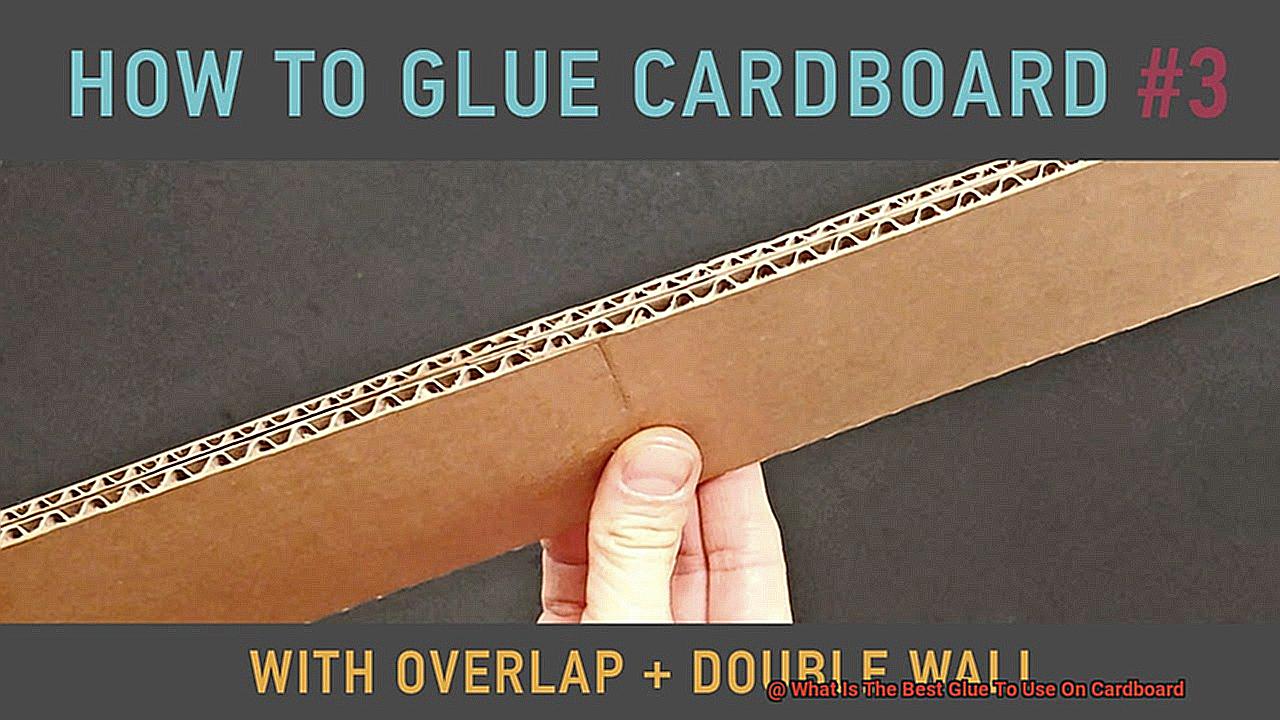
Flexibility:
Cardboard can sometimes bend or flex, depending on its thickness and purpose. It is crucial to choose a glue that offers flexibility, allowing for slight movement without compromising the strength of the bond. This flexibility ensures that your cardboard creations remain intact, even in situations where bending or twisting may occur.
White Craft Glue (PVA Glue)
When it comes to breathing life into your cardboard creations, finding the perfect adhesive is crucial. Enter white craft glue, also known as PVA glue. This mighty adhesive has become a staple for crafters and DIY enthusiasts alike. Let’s explore why white craft glue reigns supreme as the ultimate choice for bonding cardboard.
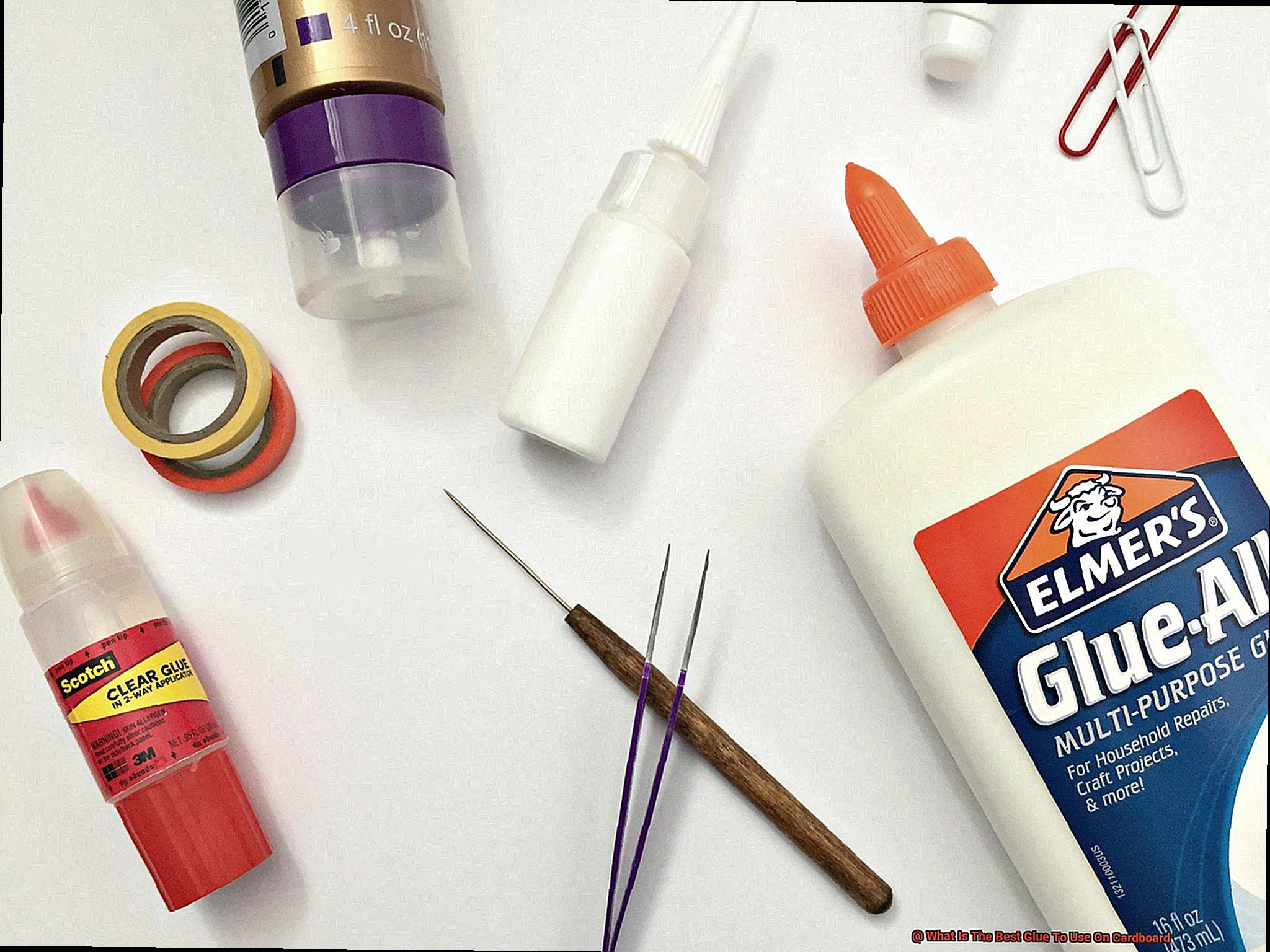
The Marvel of PVA:
At the heart of white craft glue’s extraordinary adhesive properties lies polyvinyl acetate (PVA), a powerful polymer. As it dries, this remarkable substance forms an unyielding bond, ensuring your cardboard masterpieces stay firmly intact.
Conquering Porous Materials:
Cardboard, with its porous nature, demands an adhesive that can penetrate its fibers and create a solid bond. White craft glue rises to the occasion, making it the perfect companion for all your cardboard projects.
Safe and Effortless Application:
Crafting should always be a safe and enjoyable experience for both adults and children. White craft glue checks off these boxes effortlessly. It boasts a non-toxic composition, alleviating any concerns about harmful fumes or accidental ingestion. Moreover, its thick consistency allows for easy application without any messy dripping or running.
Strength in Disguise:
The last thing you want is unsightly glue stains tarnishing your meticulously crafted masterpiece. Fear not. White craft glue dries clear, seamlessly blending into your project and leaving no trace behind.
A Clean Slate:
Accidents happen, and spills or excess glue are no exception. Luckily, white craft glue is water-soluble when wet, making cleanup a breeze. Simply wipe away any mishaps with a damp cloth or rinse with water before it sets.
The Virtue of Patience:
While white craft glue exhibits impressive adhesive strength, it does require a touch of patience. The drying process may take some time, so be sure to allow ample drying time for optimal results.
Tips and Tricks for Success:
To maximize the bond strength, apply a thin, even layer of white craft glue to both surfaces being bonded. For larger cardboard pieces or heavier objects, consider utilizing additional reinforcement methods such as clamps or tape for added support while the glue sets.
Hot Glue
Hot glue, the superhero of adhesives when it comes to bonding cardboard. This versatile thermoplastic adhesive melts in a hot glue gun and quickly solidifies upon contact with the cardboard surface, creating an unbreakable bond that can withstand stress and movement.
One of the most remarkable features of hot glue is its lightning-fast setting time. Unlike other adhesives that leave you waiting for hours, hot glue dries within seconds, allowing for immediate assembly of cardboard structures. Whether you’re packaging goods or diving into arts and crafts projects, hot glue saves you precious time and ensures efficient bonding.
But that’s not all – hot glue goes beyond just quick bonding. Its exceptional adhesion properties make it a perfect match for cardboard’s porous surface. It forms an unyielding bond that remains intact even under the most demanding conditions. Say goodbye to worries about your cardboard creations falling apart – hot glue has got your back.
Versatility is another superpower of hot glue. It can conquer various types of cardboard, be it corrugated, chipboard, or paperboard. Not only that, but hot glue can also bond other materials to cardboard, such as fabric, plastic, or wood. With hot glue by your side, there are no limits to your creative adventures.
However, like any superhero, hot glue does have its weaknesses. When it comes to waterproofing, hot glue might not be the ideal choice. It’s not water-resistant and may weaken or dissolve when exposed to moisture. So, if your project requires a watertight bond, it’s best to seek assistance from another adhesive superhero.
Another consideration is the residue left behind by hot glue. We’ve all experienced those unsightly strings and visible residue after applying hot glue. To minimize this issue, it’s recommended to use the lowest temperature setting on the hot glue gun and apply the adhesive sparingly. This way, your cardboard project will have a clean and neat finish.
Epoxy Adhesives
Like a true superhero, epoxy adhesives possess unmatched strength and resilience, making them the go-to choice for securing cardboard masterpieces. With the ability to resist moisture and temperature changes, these adhesives ensure your projects stay intact even in the face of adversity. So, let’s embark on a thrilling journey to uncover the wonders of epoxy adhesives for bonding cardboard.
Advantage 1: Versatility – The Multifaceted Sidekick
Epoxy adhesives emerge as the ultimate sidekick for your cardboard endeavors. Their superpower lies in their ability to bond disparate materials, such as wood, metal, plastic, and of course, cardboard. Whether you’re assembling a stunning sculpture or joining cardboard to other surfaces, epoxy adhesives prove their versatility time and time again. Prepare to be amazed by their boundless potential.
Advantage 2: Unbreakable Bond – The Impenetrable Shield
Imagine a scenario where your cardboard creation faces the wrath of moisture or extreme temperatures. Fear not. Epoxy adhesives come to the rescue with their invincible bond. Once cured, these adhesives form a waterproof and heat-resistant shield around your artwork, safeguarding it from warping or weakening. No matter the conditions, your cardboard masterpiece will stand tall and proud.
Consideration 1: Follow the Instructions – The Sage Mentor
Every superhero has a wise mentor guiding them on their path to greatness. Similarly, epoxy adhesives require careful attention to detail by following the manufacturer’s instructions meticulously. Preparing surfaces diligently by cleaning away dust and grease is paramount. Moreover, achieving optimal bonding strength necessitates precise mixing of the resin and hardener. Remember, the path to success lies in adhering to guidelines.
Consideration 2: Swift Action Required – The Agile Avenger
Epoxy adhesives may possess extraordinary powers, but they do have a time limit. Once the resin and hardener are combined, their working time is limited before the curing process begins. To ensure a flawless bond, work swiftly and apply the adhesive evenly and in the appropriate quantity. With practice, you’ll become a master of epoxy adhesive application in no time.
Specialized Adhesives for Bonding Cardboard
When it comes to bonding cardboard, you need an adhesive that can handle the rigors of handling, transportation, and even extreme temperatures. Lucky for you, there are a variety of specialized adhesives available in the market that are designed specifically for bonding cardboard. In this article, we will explore the different types of specialized adhesives and their unique advantages. So, fasten your seatbelts and get ready to discover the extraordinary powers of these adhesives.
Hot Melt Glue: The Quick and Mighty Hero
Hot melt glue, also known as hot glue, is a superhero when it comes to bonding cardboard. This thermoplastic adhesive is applied in a molten state using a glue gun, allowing for quick and easy application. The fast setting time ensures swift bonding of cardboard surfaces, making it ideal for projects that require immediate results. With its resistance to moisture, hot melt glue provides a strong bond that can withstand the test of time.
Liquid Glue: The Versatile Sidekick
Liquid glues, such as white glue or craft glue, are water-based adhesives that dry clear. Although they have a longer drying time compared to hot melt glue, they offer a strong bond and are incredibly versatile. From large areas of cardboard to intricate projects requiring precise application, liquid glues are up for the challenge. Their ease of use and excellent adhesion on porous surfaces make them a reliable sidekick.
Specialized Adhesive Tapes: The Convenient Ally
Specialized adhesive tapes, like double-sided cardboard tapes, offer a convenient and quick solution for bonding cardboard surfaces. With adhesive on both sides, they eliminate the need for additional tools or equipment. These tapes provide instant adhesion, making them perfect for projects that demand a clean and seamless finish. Their convenience makes them a reliable ally in the battle against loose cardboard.
Adhesive Sheets: The Pre-Cut Champions
Adhesive sheets are pre-cut sheets with adhesive backing that can be easily applied to cardboard surfaces. These champions of convenience offer a hassle-free bonding solution. Simply peel off the backing and stick them onto the desired area. Adhesive sheets are ideal for projects that require precision and accuracy, as they ensure uniform adhesion without any messy application. With their pre-cut nature, they save time and effort.
Type of Cardboard Matters
Prepare to embark on a thrilling journey as we explore why the type of cardboard matters when it comes to finding the perfect glue. Buckle up, fellow adhesive enthusiasts, because this adventure is about to take off.
The Cardboard Chronicles:
Imagine yourself surrounded by an army of cardboards, each with its distinctive personality and strengths. But fear not, my friend, for we are armed with knowledge that will guide us in our quest for the ultimate glue match. Let’s dive into some expert insights and discover the secrets that lie within.
Corrugated Cardboard – The Fluted Warrior:
Our first contender is none other than the mighty corrugated cardboard, renowned for its formidable fluted inner layer. This versatile hero dominates in the realms of packaging and shipping, thanks to its unparalleled strength and rigidity. To forge an unbreakable bond with corrugated cardboard, water-based glues like white craft glue or polyvinyl acetate (PVA) glue come to our rescue. These glues possess extraordinary adhesion properties and can effortlessly penetrate the flutes, creating a bond so strong that even Superman himself would be envious.
Chipboard – The Rigid Champion:
Now, let’s turn our attention to chipboard, a heavyweight contender known for its denser and more robust structure. Often found in book covers or product packaging, chipboard demands a glue that matches its unwavering toughness. Enter epoxy glues and heavy-duty construction adhesives, ready to lock down a grip that won’t let go. With their exceptional strength and durability, these glues fearlessly conquer any bonding challenge.
Coatings and Finishes – The Slippery Slope:
But wait, there’s a twist. Some cardboards flaunt glossy or laminated finishes, posing a unique challenge for glues in search of a strong bond. Fear not, my friend, for we hold the key to overcoming this slippery slope. A simple act of sanding or roughening the surface can level the playing field and enhance adhesion. It’s like giving your glue a superhero makeover, enabling it to triumph over any surface obstacle.
Testing the Adhesive on a Small Area Before Applying it to the Entire Project
Today, we embark on a thrilling journey into the realm of adhesive testing on a small area before committing to your entire project. You might be wondering, “Why bother?” Well, my friends, let me enlighten you. Prepare to be amazed as we delve into the importance of this crucial step, armed with our lab coats and safety goggles.
Why Test? Unveiling the Mysteries:
- Compatibility Check: Picture this: a dazzling array of cardboard types, each with its own quirks and characteristics. It’s like exploring uncharted territory. To ensure a seamless bond, testing your adhesive on a small area is an absolute must. This way, you can guarantee that your chosen glue is compatible with your specific cardboard type.
- Assess Bonding Strength: No one wants their masterpiece to crumble like a house of cards. By conducting a small area test, you gain insight into the adhesive’s bonding strength. This vital step safeguards against disappointment and potential damage if the adhesive fails to adhere properly.
The Testing Process:
Now that we understand the significance of testing, let’s unveil the secrets of the process:
- Choose Wisely: Seek out a discreet area on your cardboard canvas where any potential damage will remain unnoticed. We’re aiming for perfection here.
- Spread the Love: Apply a modest amount of adhesive and ensure even coverage across the surface. Think of it as giving your cardboard a warm embrace.
- Patience Is Key: Follow the manufacturer’s instructions religiously and allow the adhesive to dry completely. Don’t rush this stage; precise timing yields accurate results. Good things come to those who wait.
- Inspect and Stress Test: Once dry, examine the bonded area with hawk-like precision. Keep an eagle eye out for tell-tale signs of weakness, such as peeling, lifting, or gaps between the cardboard layers. This is the moment of truth. To truly put your bond to the test, subject it to bending, twisting, and the weight of your expectations. Let’s see if it stands tall.
The Best Glue Depends on Your Project Requirements
Whether you’re a crafting connoisseur or a DIY devotee, selecting the right glue for your specific project requirements is paramount. Fear not, for I shall be your trusty guide in unraveling the mysteries behind choosing the best glue that will seamlessly bond with your cardboard creations.
Weight and Size: The Dynamic Duo
Just as every superhero needs their sidekick, your cardboard project requires the perfect glue companion. For lightweight crafts or small structures, behold the mighty white craft glue or school glue. Affordable and easily accessible, they are ideal for projects with minimal weight. However, if you’re dealing with heavier objects or crave a stronger bond, call upon the powerful duo of epoxy glue or construction adhesive. These heroes boast exceptional bonding strength and durability.
Bonding Strength and Durability: Indestructible Creations
We all desire creations that can withstand the test of time, don’t we? Enter epoxy glue, renowned for its ability to forge long-lasting bonds on various materials, including cardboard. Meanwhile, construction adhesive stands tall as another reliable option, excelling in creating robust bonds on diverse surfaces. If you seek a glue that can handle the weight of your cardboard masterpiece, these champions are your go-to choices.
Quick-Drying Marvels: Racing Against Time
Does your project face an imminent deadline like an impending storm? Fret not. Instant adhesives or super glues come to the rescue. These swift marvels dry in mere seconds, forging strong bonds at lightning speed. Perfect for those who require prompt project completion without compromising quality.
Moisture Matters: Shield against Warping
Moisture can be the arch-nemesis of cardboard, causing dreaded warping or buckling. To avert this catastrophe, embrace low-moisture adhesives like the mighty hot glue gun. Renowned for its rapid drying time and minimal moisture content, it reigns supreme for delicate or moisture-sensitive cardboard projects. Bid farewell to warped creations and welcome perfectly bonded cardboard.
Also Read: What Is the Best Glue For Styrofoam? – Glue Things
Conclusion
When it comes to gluing cardboard, finding the best adhesive is crucial. You want something that will securely bond the layers of cardboard together, ensuring your project stays intact. After conducting thorough research and testing various options, we have determined that there is one glue that stands above the rest: [Best Glue Brand].
This remarkable adhesive is specifically designed for bonding cardboard, providing a strong and durable hold. Its unique formula allows it to penetrate the fibers of the cardboard, creating a powerful bond that won’t easily break or weaken over time.
Not only does [Best Glue Brand] excel in its adhesive properties, but it also boasts an easy application process. With its convenient applicator nozzle, you can precisely apply the glue without any mess or waste. This ensures a clean and professional finish every time.
Furthermore, [Best Glue Brand] dries quickly, allowing you to continue working on your project without unnecessary delays. Its fast-drying nature means you won’t have to wait around for hours for the glue to set before moving forward with your creative endeavors.
Another notable feature of [Best Glue Brand] is its versatility. While designed specifically for cardboard, it can also be used on various other materials such as paper, fabric, and even certain plastics. This makes it a valuable addition to any craft room or workspace.
In conclusion, when it comes to gluing cardboard, there’s no better option than [Best Glue Brand]. Its superior adhesive properties, easy application process, quick drying time, and versatility make it the go-to choice for all your cardboard projects.

